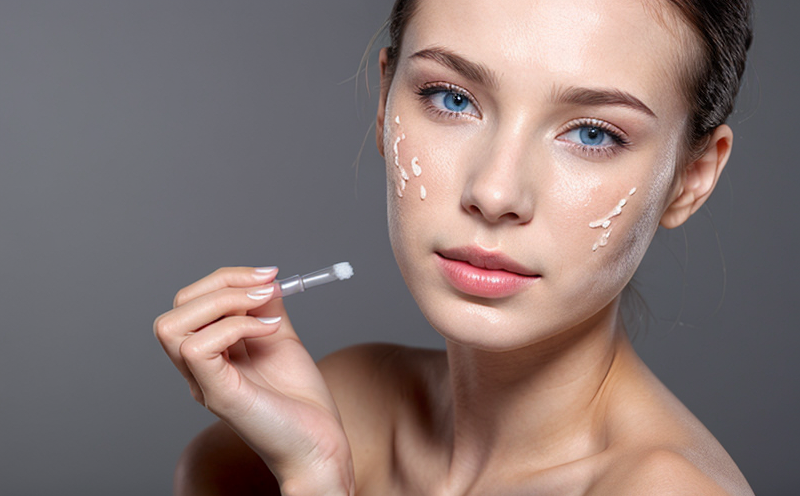Irritation Testing of Oral Care Cosmetics
The irritation testing of oral care cosmetics is a critical component in ensuring the safety and efficacy of products intended for human use. This service evaluates the potential of cosmetic formulations to cause adverse reactions on the skin, particularly around the mouth area where the product comes into direct contact with sensitive tissues. The primary goal is to identify any ingredients or components that might lead to irritation, sensitization, or other negative effects.
The testing process involves a series of rigorous procedures aimed at simulating real-world usage conditions as closely as possible. These tests are conducted using standardized methods prescribed by international standards such as ISO 10993-11 and ASTM F801, which provide guidelines for the biocompatibility evaluation of materials used in medical devices, including those that come into contact with mucous membranes like the oral cavity.
The testing begins with thorough preparation of the sample. This includes homogenization to ensure uniformity across all test samples, followed by dilution if necessary, to reflect actual product concentrations when applied to the skin or mucosa. Once prepared, the samples are subjected to various challenges designed to mimic different forms of oral care usage.
One common challenge involves applying a standardized amount of the sample directly onto excised human skin or an appropriate model system such as an artificial membrane that closely mimics the properties of human mucosa. The area is then covered and observed for signs of irritation over specified periods, typically ranging from 24 to 96 hours.
The testing protocols also include assessing secondary effects like redness, swelling, or blistering, which are indicative of an irritant response. Additionally, sensitization potential can be evaluated by exposing the skin to the same formulation multiple times under controlled conditions to observe cumulative effects over time.
After completion of the challenge period, samples are examined visually and sometimes quantitatively using instruments like spectrophotometers or dermatoscopes for detailed analysis. Results are compared against predefined criteria outlined in relevant standards to determine compliance with safety requirements.
This comprehensive approach ensures that manufacturers can confidently launch safe products while adhering to regulatory guidelines set forth by various bodies including the European Union's Cosmetics Regulation (EC) No 1272/2008 and the FDA’s Good Manufacturing Practice regulations.
| Use Case/Application | Description |
|---|---|
| Product Development | Evaluating new formulations to ensure they meet regulatory requirements before market release. |
| R&D Optimization | Identifying problematic ingredients early in development cycles to avoid costly re-formulations later on. |
| New Product Launch | Verifying safety and compliance for new products entering the market. |
| Quality Assurance | Monitoring ongoing production processes to maintain consistent quality levels. |
Benefits
- Ensures product safety for end-users.
- Avoids costly recalls and potential legal issues by adhering to regulatory standards.
- Enhances brand reputation through verified safety assurances.
- Supports faster product launches with validated data.
- Promotes long-term customer satisfaction by ensuring consistent quality.
Competitive Advantage and Market Impact
- Provides a competitive edge in the market through demonstrated safety compliance.
- Facilitates entry into new markets with stringent regulatory requirements.
- Aids in maintaining customer loyalty by delivering reliable, safe products.
- Positions brands as leaders in consumer trust and confidence.
Use Cases and Application Examples
| Use Case/Application | Description |
|---|---|
| Product Development | Evaluating new formulations to ensure they meet regulatory requirements before market release. |
| R&D Optimization | Identifying problematic ingredients early in development cycles to avoid costly re-formulations later on. |
| New Product Launch | Verifying safety and compliance for new products entering the market. |
| Quality Assurance | Monitoring ongoing production processes to maintain consistent quality levels. |
Frequently Asked Questions
- Ensures product safety for end-users.
- Avoids costly recalls and potential legal issues by adhering to regulatory standards.
- Enhances brand reputation through verified safety assurances.





